Simplicity through Tenkara
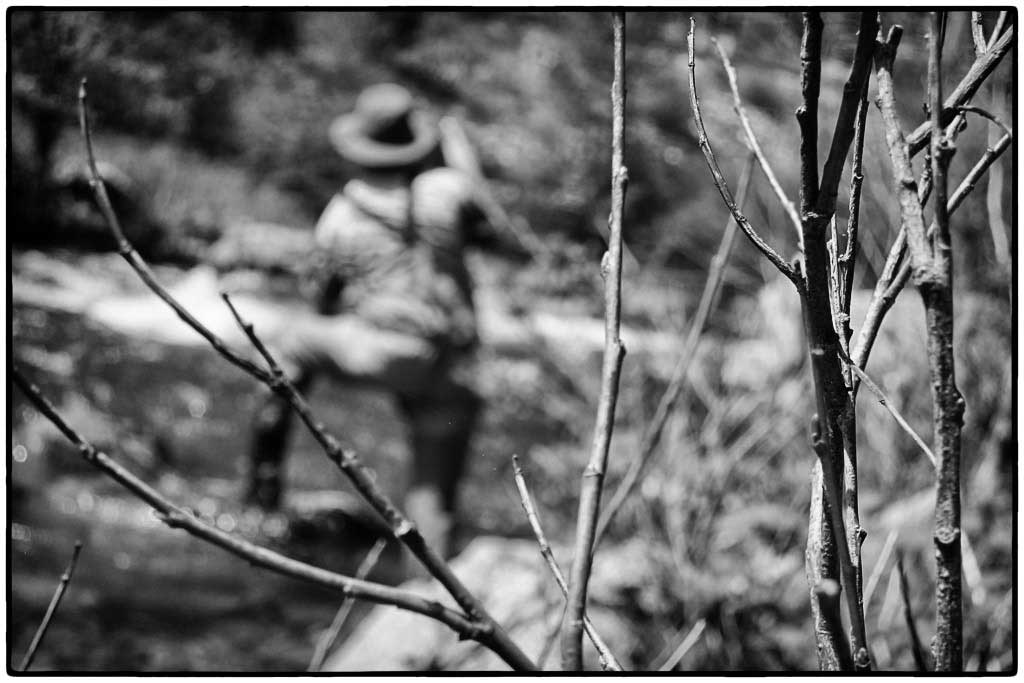
I have learned to seek simplicity in this world. In this, I am hardly alone. There exists a romanticized but still palpable sense of something simpler we’ve all lost along the way. It feels elusive, lost in the modern age. But in reality, it is still within reach. Most of life’s complications are of our own creation. The elimination of non-essentials, a minimalist approach, breathes life into what remains. I have found that simplicity achieved is directly proportional to enjoyment of most things, from life in general to fly fishing in particular. The ability to achieve singular focus on any task at hand is what enables happiness. By eliminating distractions, we can create space to focus on only the bare essence of the thing itself.
For the avid outdoors enthusiast, this struggle is frequently manifest when it comes to gear. How much is too much? Where do you draw the line? As a consumer, I am driven by imagery in advertising that promises new and wild adventures. Catalogs full of vivid photography are calculated reflections, feeding my aspirations, selling my very own self right back to me. But as a skeptical wage-earner, I temper my lustful desires, armed with the knowledge that I should already have the necessary tools at my disposal. I have come to realize that excess is a burden, not only on my wallet, but on my body and soul.
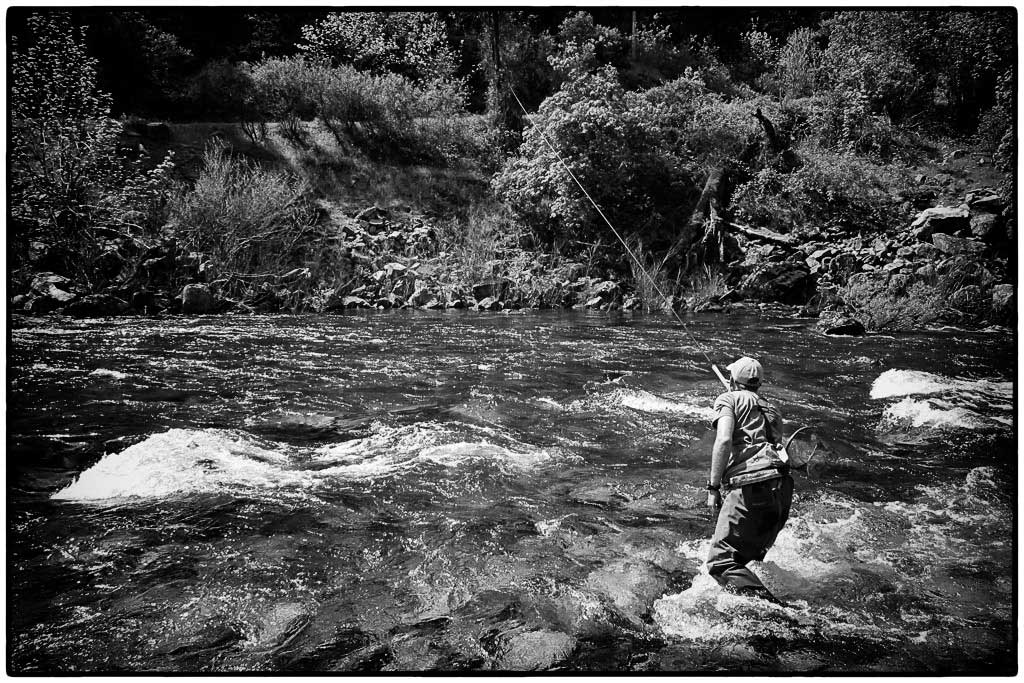
When I do identify a very persistent want, one that survives my best attempts at substitution or suppression, I turn to the market for fulfillment. And so, for some time now, I have been researching a backpacking solution to fly fishing. When you have to carry all your possessions on your back, traveling light is obviously the way to go. At the same time, fly fishing is a sport that can involve a fair amount of… stuff. What do you think the modern Western fly angler has in all those vest pockets, those colorful drawers on the desk, those tall tubes in the garage, those dusty boxes in the attic? Stuff, lots of expensive stuff. Most of it is small and fiddly, but all of it is the weight that we carry, and it inevitably adds up.
Backpacking is an exercise in self-reliance, so the balance between preparedness and minimalism needs to be constantly tuned. There is an old climbing adage that if you bring bivy gear, you better plan on using it; the implication is that if you carry extra weight in case you need to spend an unplanned night out, that extra weight will slow you down and ensure you will need to spend the night. The lesson is that over-preparation can become a self-fulfilling prophecy. Anything you bring with you that you don’t really need or use is only a burden to shoulder. So, pack wisely. When it comes to backpacking, the activity of fly fishing is not exactly essential, but I am determined to embed fly fishing as part of my backpacking repertoire. In order to tread lightly, I set out to discover the essentials of fly fishing itself. With this purpose in mind, I stumbled across Tenkara.

Tenkara describes the form and tools of Japanese fly fishing, developed on high mountain streams in isolation from the wider Western world. To put it simply, Tenkara consists of a fly rod with no reel. Nowadays, these rods are collapsible and lightweight. The word “Tenkara” itself is of uncertain origin, but the accepted definition is “from heaven”, an evocative description of a fly descending from the good gods above, gifted down the gullets of unwary trout. I learned about Tenkara from Daniel Galhardo, the man who first imported the tools and teachings from Japan to the United States through the company he founded, Tenkara USA, right here in San Francisco.
I had the distinct pleasure of joining Daniel on an outing on the Tuolumne River on the opening day of the fishing season. By pure happenstance, I met Daniel several weeks earlier at Planet Granite, a climbing gym in the Presidio in San Francisco. I had been researching Tenkara that very week, watching Tenkara USA’s extensive Youtube collection. It was from these videos that I immediately recognized the red-bearded man belaying right next to me at the gym. Wait for a second, isn’t that the Tenkara guy? I never forget a face. A subsequent split-second scan of his Tenkara t-shirt confirmed my suspicions.
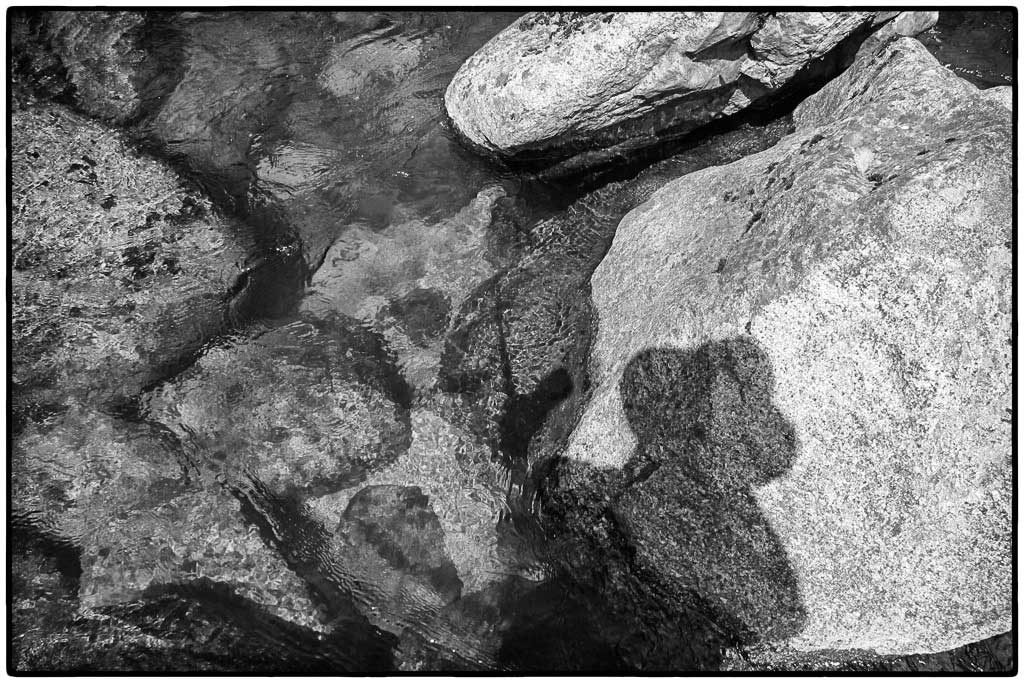
Between belays, I briefly related to Daniel my story, my interest in backpacking, and my desire to take Tenkara for a test drive. He offered to take me to the casting ponds at the Golden Gate Angling and Casting Club, where we are both members and invited me to an upcoming Tenkara group outing. I was nearly embarrassed by his good-natured generosity. A few weeks later, I loaded up the car with my girlfriend to join Daniel and the rest of the Tenkara crew out on the Tuolumne river. Daniel spent the whole day taking everyone fishing and teaching them all about Tenkara.
Daniel is clear to draw a distinction between Tenkara the tool and Tenkara the method. Tenkara the tool is a fly rod with a fixed-length line and no reel. The characteristics of a Tenkara rod are ideal for small rivers and mountainous streams. The rods are much longer than your typical Western gear, ranging roughly 11 to 14 feet. The additional reach keeps your line off of the water, enabling drag-free drifts of dry flies. It becomes an extension of your body more than any fly rod I’ve handled before. At the same time, these long rods have an ingenious telescoping design, collapsing down into a length under two feet, ideal for backpacking. Ultimately, Tenkara the tool can be used for anything you like. You can Czech-nymph and high-stick with a Tenkara rod extremely effectively. You can chuck split-shot, streamers, or thingamabobbers to your heart’s content. It is yours to use and make your own.

So, what do you do with no reel? Well, you cast. Casting a Tenkara rod reminds you to slow down. Exaggerated body movements do not help. There is no extra line to strip, haul, or shoot. You cannot muscle through it. It is a shorter stroke, with a little more wrist to open it up. It is a clean, precise, delicate cast that floats the fly directly on top of your intended delivery. You don’t miss the reel, nor the mess of lines that can accumulate in your lap. Your offhand finds itself looking for something to do.
Tenkara the method is a traditional approach reflecting its roots in Japan. The methodology was not born under the umbrella of one centralized school but rather developed independently by many countless fishermen, experimenting with what they had and what they could make. Those techniques have been consolidated today, and stand in contrast to the Western style we all know in a number of important ways. Instead of floating indicators, the line itself is used as an indicator. Instead of a split shot, the current is used to sink the fly to the appropriate depth. Instead of matching the hatch, Tenkara in its purest form prescribes the usage of only one simple un-weighted fly pattern.
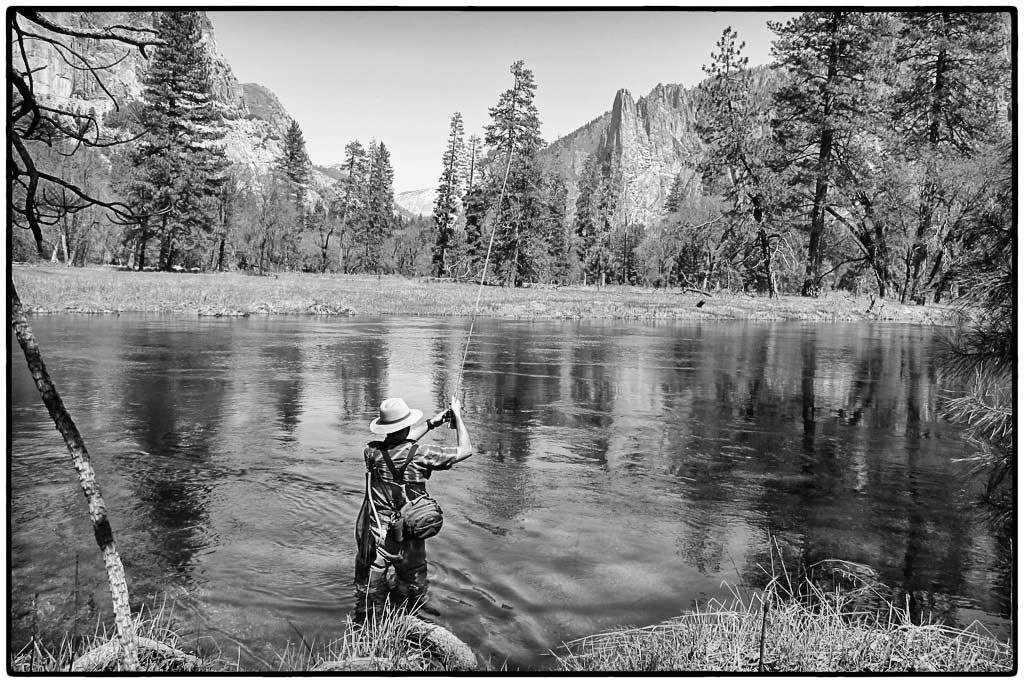
Wait, what? This is a revolutionary notion to me.
Like many fly fishermen, I am mostly self-taught. And by that, I mean I have spent quite a bit of time not catching any fish. I learned to fly fish in the past five years, well past the profusion of fly fishing’s popularity. I have wandered bewildered in fly shops, marveling at the abundance of gear and equipment. I previously supposed that if there are two hundred different fly patterns for sale at my local fly shop, then there must be two hundred different scenarios when each one of those is individually applicable. How naïve. I would blame my inability to hook a fish on my poor choice of fly selection. I have spent an awful lot of time standing by the side of streams, tying on multitudes of different fly patterns because what I was doing simply was not working. Well, Tenkara reaffirmed the notion that it’s not a matter of experimenting with more stuff, it’s a matter of refining techniques using what you’ve already got.
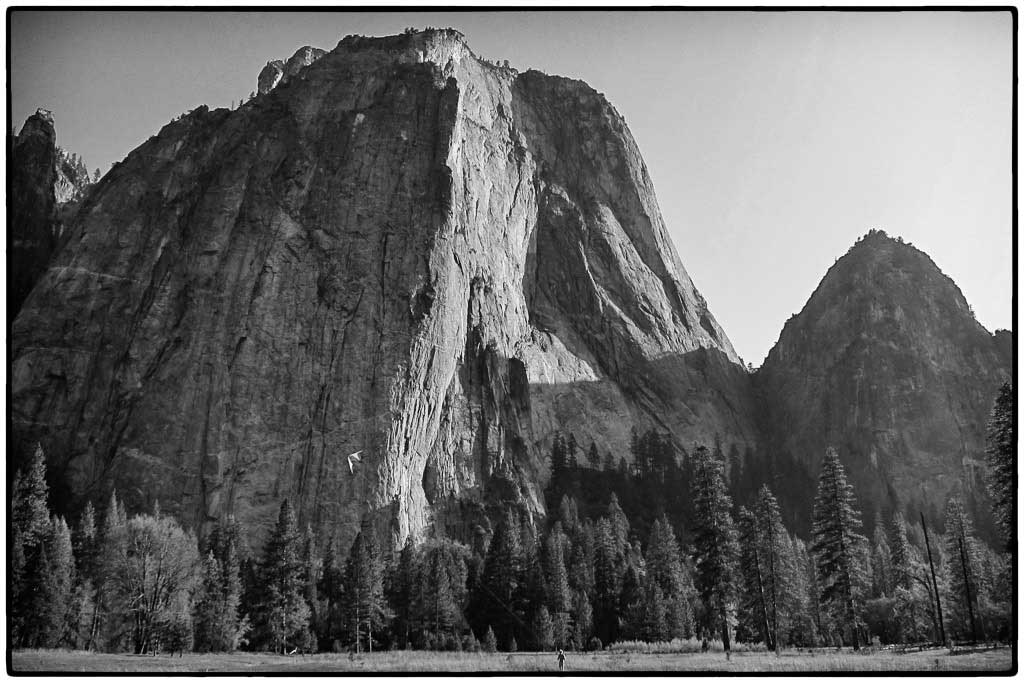
I started fly fishing because trout live in beautiful places and I wanted an excuse to go in search of them. I wanted to spend my time there. Since then, fly fishing has slowly but surely become an end in and of itself. But sometimes I find myself standing streamside, cursing snags, fiddling with frigid fingers, unwinding wind knots in the middle of the wilderness, and I take a step back. I take a deep breath and absorb the world around me, peeling back the layers, and recalling what brought me here in the first place. I love to share fly fishing with others, but sometimes the things we take for granted can get in the way. Tenkara simply makes fly fishing more approachable. I know this to be true because my girlfriend says so. Is that not the ultimate test? With a Tenkara rod in hand the distractions of life, not to mention the sport itself, dissolve away.
Daniel likes to call Tenkara “streamlined fly fishing”. I am reminded of the timeless quote from the poet and aviator Antoine de Saint-Exupery, “Perfection is achieved, not when there is nothing more to add, but when there is nothing left to take away”. Granted, Tenkara is not absolute perfection; there are some compromises. The rod strength may not be what you are accustomed to. You may not land the largest fish of your life on a Tenkara rod. You may not want to yard on your rod the next time you snag a log in deep water. But the benefits outweigh the sacrifices. Besides, the new tradition of Tenkara in the United States is only just beginning. As anglers adapt and adjust techniques and new tools are engineered, we are sure to see endless interpretations of what is possible.
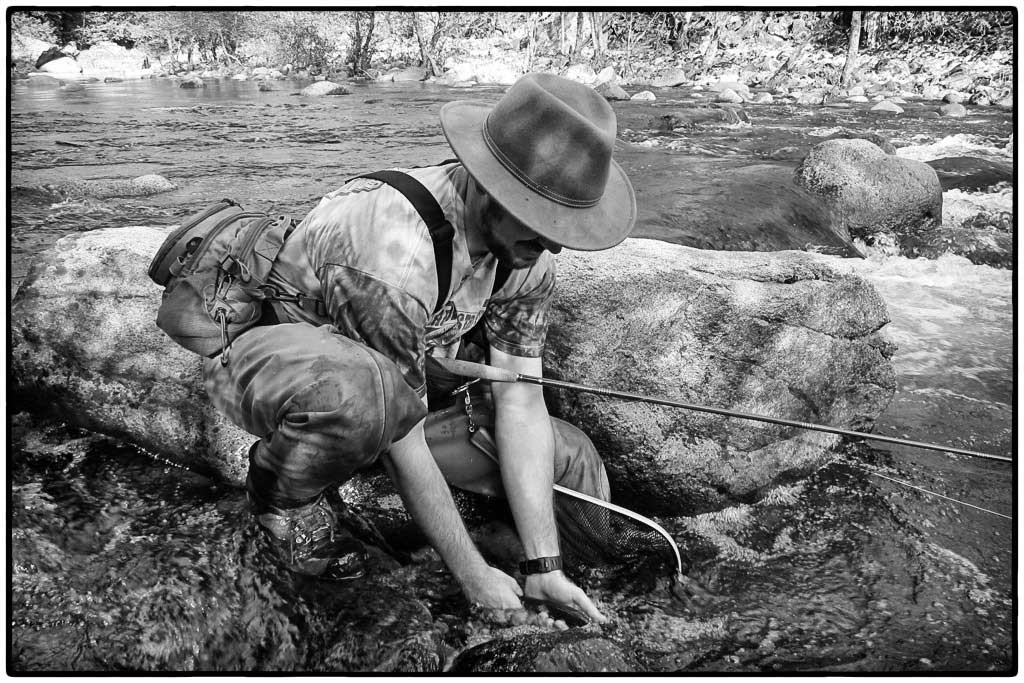
When it comes down to it, Tenkara works. The tools of Tenkara are lightweight and simple, not to mention surprisingly affordable. The history, methodology, and philosophy are rich, insightful, and meaningful. The modern world of fly fishing can be intimidating and more than a little confusing, but there is a reprieve for those who seek it. For any beginner looking to explore the sport of fly fishing and for any expert looking to rediscover it, Tenkara is the simplest answer out there.
